Panel beating – a guide to common techniques
Index
Repairing a damaged vehicle is a labour intensive process. While there are a number of handy guides online about repairing a dent or bingle yourself, in reality it’s not a job for amateurs – especially if you’re aiming for a perfect finish.
Remember that the resale value of your car depends on it looking as good as possible, so even if you save a few dollars from doing a DIY job on a dent, it the end, it could cost you getting a top price when you put it on the market.
Yellow Pages visited Bridge Road Body Works in Richmond, Melbourne to find out more about repairing a damaged vehicle. We spoke to George Stavrou about the possibility of fixing a damaged car by yourself. "It takes a long time to learn panel beating properly," he said. After trade school George got an apprenticeship and has been a panel beater for 14 years. He stressed the risks of doing a bad repair, and how it can impact the value of the vehicle.
So what are the steps involved?
Panel beaters use a number of techniques to remove dents and shape panels to match the original contours of the vehicle, before smoothing, re-surfacing and spray painting the damaged areas. An expert panel beater will make a damaged car look like new.
These are the steps in panel beating:
- Re-alignment
- Shrinking/Stretching
- Planishing
- Welding
- Filling
- Sanding
- Spray painting
 Realignment
Realignment
After an impact or accident the car must be realigned before any body works can take place. A hydraulic lift is used to carefully pull the chassis into place before it is squared up.
A hydraulic lift is used in a smash repair workshop to make sure the chassis and other mechanical parts are properly aligned after possible damage from the impact of a collision.
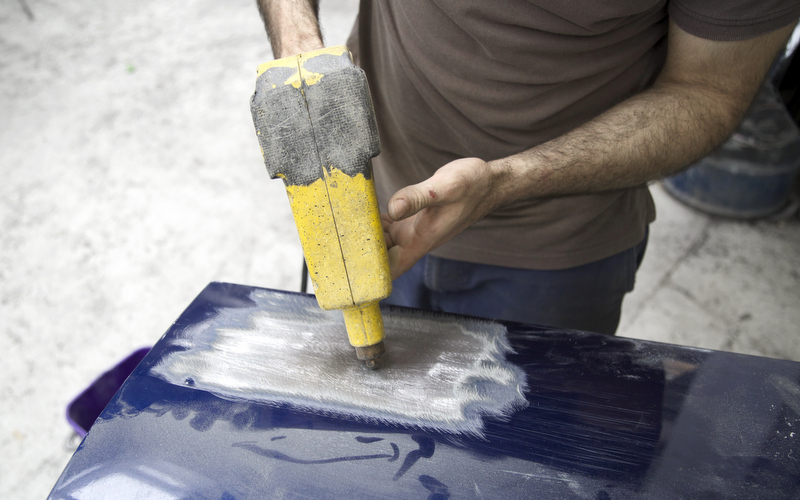 George applies heat to the surface with a heat gun to stretch and shrink the dint.
George applies heat to the surface with a heat gun to stretch and shrink the dint.
If a panel on a car’s body is dented, the metal is stretched out of shape. The panel beater has to shrink and stretch the metal back to it’s original dimensions. This needs heat. The panel beater applies heat to the surface using a heat gun, and then hammers the area with a special shaping hammer to re-shape the metal. Then he uses a wet cloth to cool the surface.
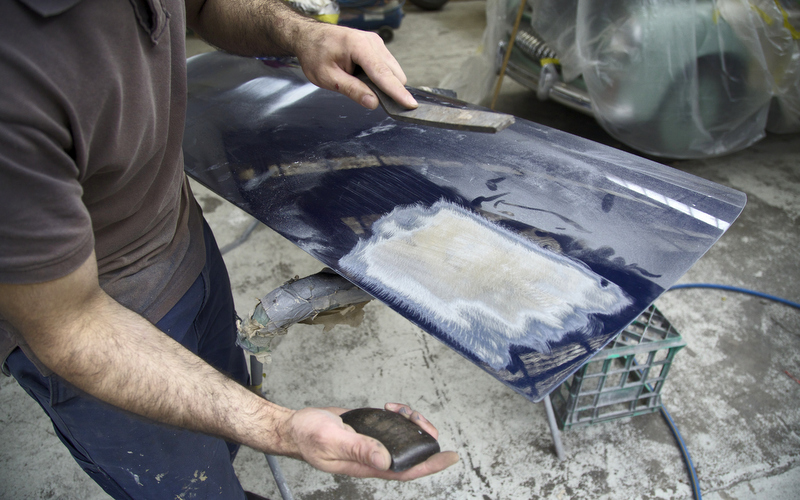 Using planishing tools, the dint is hammered into shape.
Using planishing tools, the dint is hammered into shape.
 Different hammers are used depending on the body part.
Different hammers are used depending on the body part.
The next step is to finish the panel surface. This involves finely shaping and smoothing it. The panel beater uses a special hammer to press out the damaged metal and restore the original shape. The panel is pushed against a shaping tool – called a “dolly” or “skate”, which matches the original contours of the panel.
Panel beaters will use welding equipment to join pieces of metal together. This reinforces the structure and strength of the vehicle.
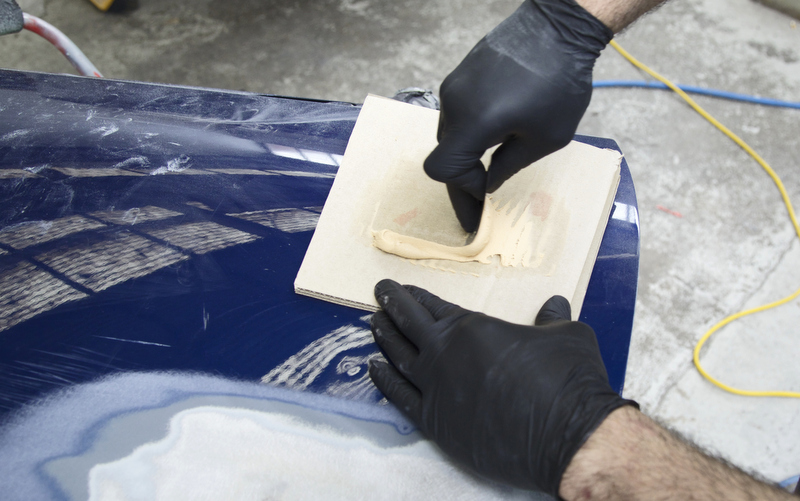 Filling ensures a smooth finish. The putty is applied in smooth, thin layers, then sanded back.
Filling ensures a smooth finish. The putty is applied in smooth, thin layers, then sanded back.
Sometimes the vehicle requires more than panel beating to restore the original contours. So, a putty filler might be applied. Filling involves mixing a paste and applying it to the vehicle surface. Once set and hardened, it can be smoothed and shaped.
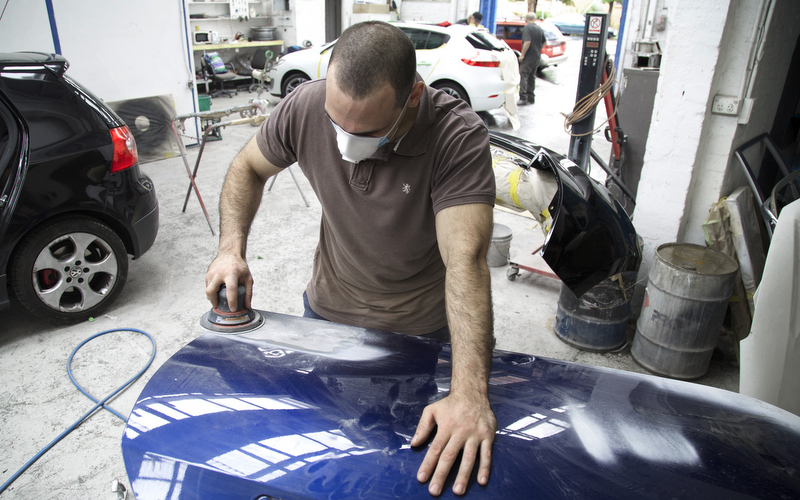 Once completely dry, the filler is sanded back.
Once completely dry, the filler is sanded back.
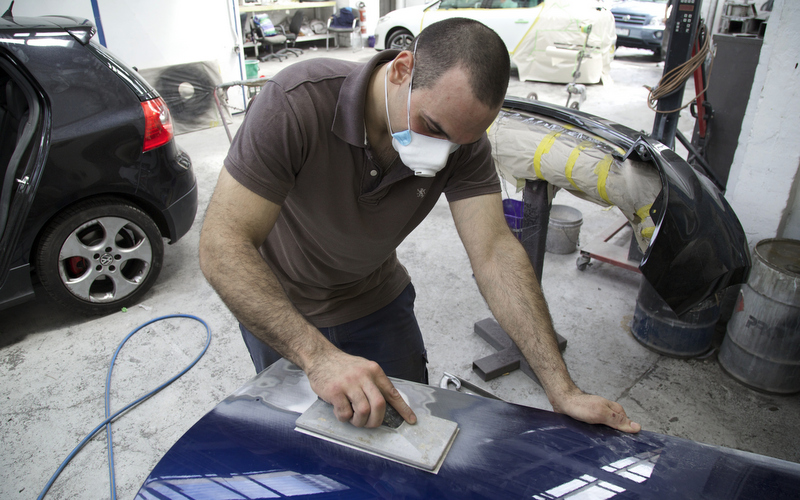 Different grades of sand paper ensure a perfect finish.
Different grades of sand paper ensure a perfect finish.
There are a number of sanding techniques, depending on the stage of the repair process. Sanding can either be a wet or dry procedure and is used to re-shape a contour and prepare the surface for painting.
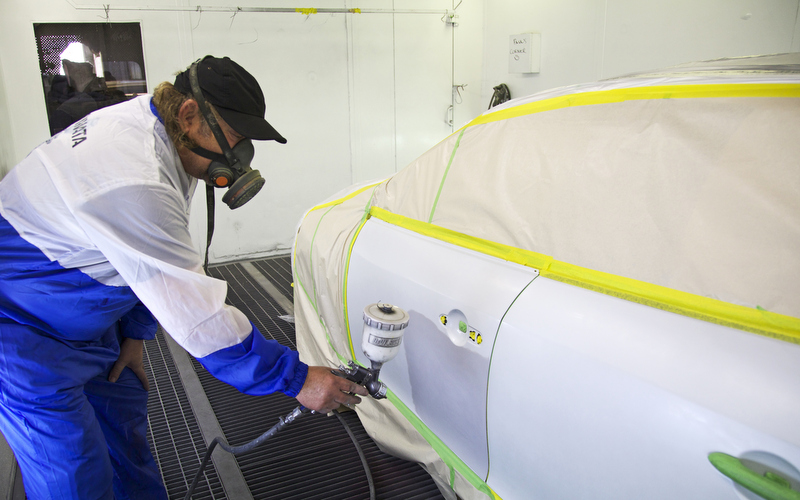 The panel is prepared for spray painting
The panel is prepared for spray painting
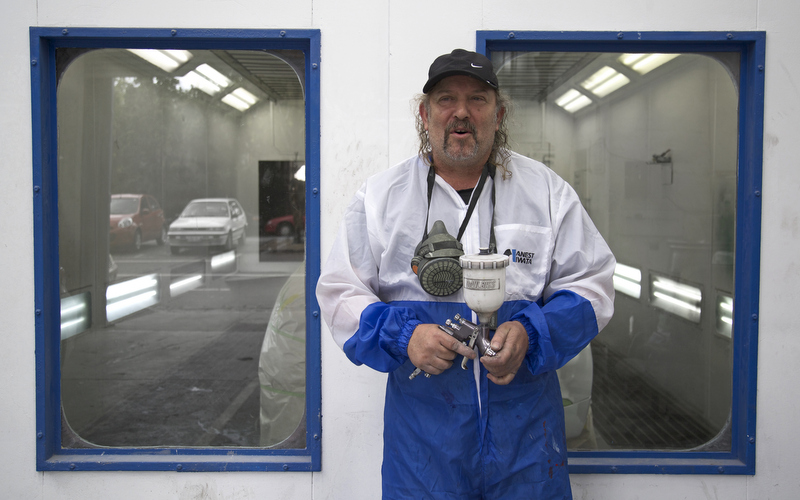 The enamel is baked on for a factory finish.
The enamel is baked on for a factory finish.
The final stage of the repair job is spray painting with strong, chip-resistant paint. Your panel beaters will use an identical paint colour to ensure the body repairs go undetected.
Spray painting is carried out in a dust-free environment, with even strokes of the nozzle on the spray gun to ensure no drips or lines. Once the paint is applied it is baked in a special oven – this gives it a good-as-new factory finish.
If your car needs the professional touch to ensure it retains its value, find a panel beater to help restore it to new. You can find a local expert here.
